Despite numerous journeys across Japan and the constant quest to discover more off-the-beaten-track destinations, Tsuwano (津和野) in Shimane Prefecture, was a mystery to me. My visit through the region of Iwami would centre around the town of Tsuwano, take in the Iwami Ginzan mine and travel along the coastline of the Sea of Japan. The small town of Tsuwano has a lot to offer: a historic district with samurai houses, an Inari shrine which is accessible through a thousand torii gates, ruins of a feudal castle with stunning panoramic views of Tsuwano and the surrounding mountains, vibrant local craft industry and, perhaps most surprisingly, some important Christian sites.
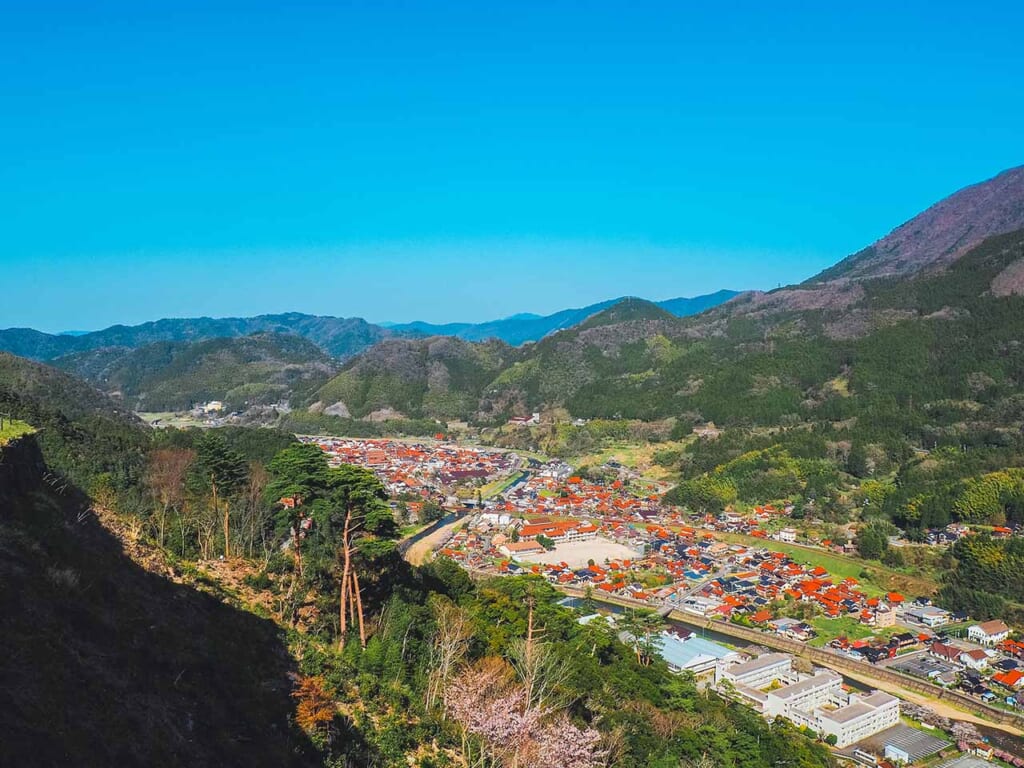
Why is Tsuwano so unknown and shrouded in such mystery? You may be interested in learning that the town is slowly beginning to develop a reputation amongst foreign visitors. Almost half are French who come to spend a few days enjoying the pleasant atmosphere and numerous attractions in the town and surrounding areas. Being French myself, I wondered why so many French people were interested in Tsuwano. I could only imagine that it was through word of mouth as this small town is exactly the type of hidden place you would recommend to your friends.
A Condensed Japan: Pleasant and Authentic
Tsuwano is often called “little Kyoto” of Iwami or San’in and there is certainly some truth in the title. For example, when exploring Taikodani Inari Shrine in Tsuwano, you can’t help but think about Fushimi Inari Taisha Shrine in Kyoto. But this town is not merely a copy of the former Japanese capital, on the contrary, it has its own culture, urban landscapes and unique nature as well as a pleasant atmosphere which allows visitors to discover real Japan, beyond the hordes of tourists.
Tonomachi Historic District
The main street in Tonomachi, Tonomachi Dori (殿町通り) is the opposite to the famous narrow streets of Kyoto and is wide and straight, lined with the white walls of former samurai residences, canals filled with koi carp and irises that bloom in June. It’s a scene from a postcard and transports us to another era, making us want to stroll around at leisure.
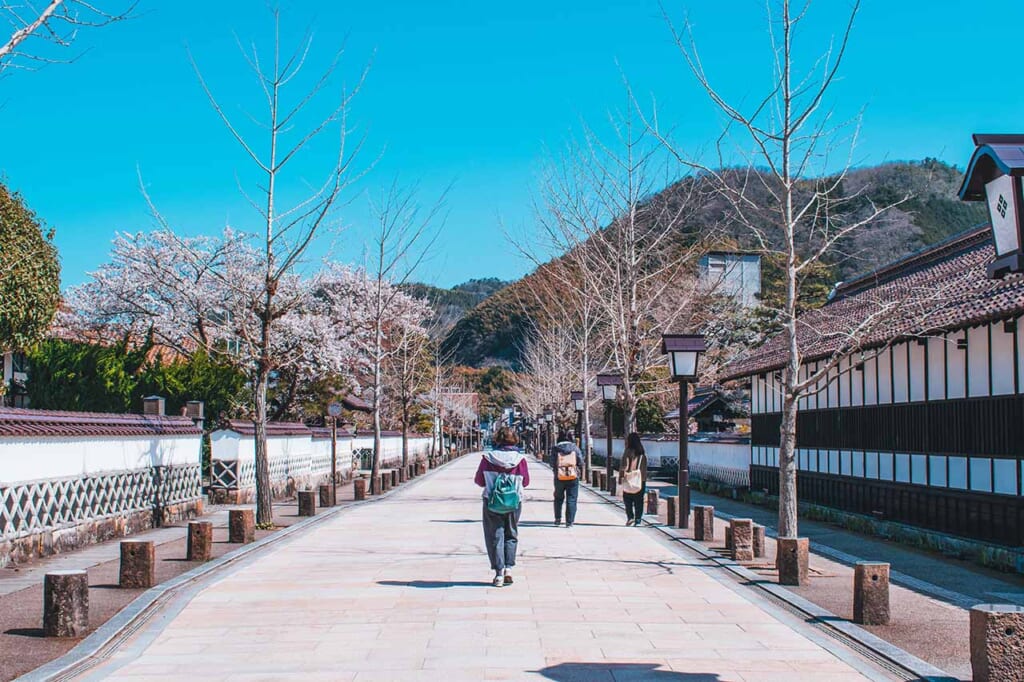
This preserved atmosphere has earned Tsuwano recognition as an important heritage site (Japan Heritage, 日本遺産 – Nihon Isan), particularly due to Tsuwano Hyakkeizu (Hundred Scenes of Tsuwano). This collection of illustrations representing the town, landscapes and traditions of Tsuwano from around 1865 proves that the landscape of Tsuwano is incredibly well-preserved. A free museum is dedicated to the drawings and is perhaps an excellent way to begin a visit to Tsuwano.
Culinary traditions have been preserved too and Sara-no-ki Shôintei, a restaurant in Tonomachi Street, serves traditional Uzume Meshi (うずめ飯). Drawing comparisons with barazushi from Okayama, this ochazuke has a rich taste behind its simple appearance. All the colourful ingredients on this dish lay beneath a layer of white rice to feign frugality and hide meat during the Edo period (1603-1868) when customs were extremely strict on these points.
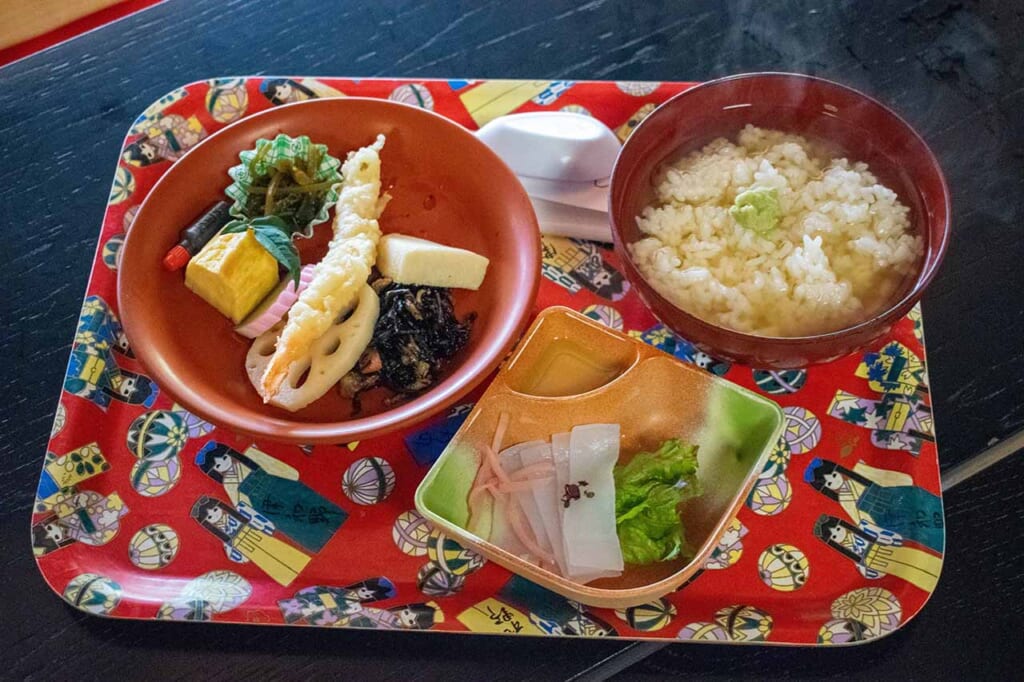
Enjoy Hanami Cherry Blossoms in Tsuwano
As we travelled in mid-March, we thought we would be too early to enjoy the cherry blossom season in Tsuwano. However, it was early this year, so we were pleasantly surprised to find that they were in full bloom for our visit. The most beautiful trees can be found along the river, just a few steps away from Tonomachi Street.
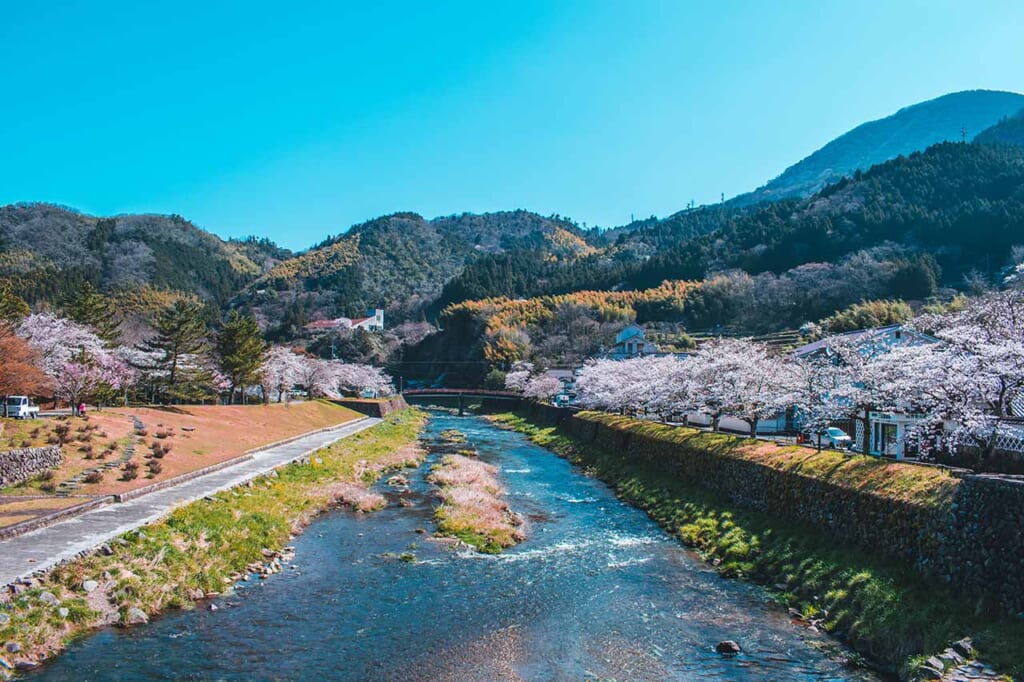
Above the white wall of the Kyodokan local history museum (津和野町 郷土館), some trees have formed a tunnel creating the perfect backdrop for a photoshoot on the banks of the river and a marvellous spot for a picnic during hanami season.
Taikodani Inari Shrine and the Thousand Torii Gates
Taikodani is one of the five most important Inari shrines in Japan. Like all shrines dedicated to the Inari Shinto god, people come to pray for a good harvest and success in business; but it was built on the heights, halfway between the city and Tsuwano Castle, above all for the protective powers also attributed to this kami.
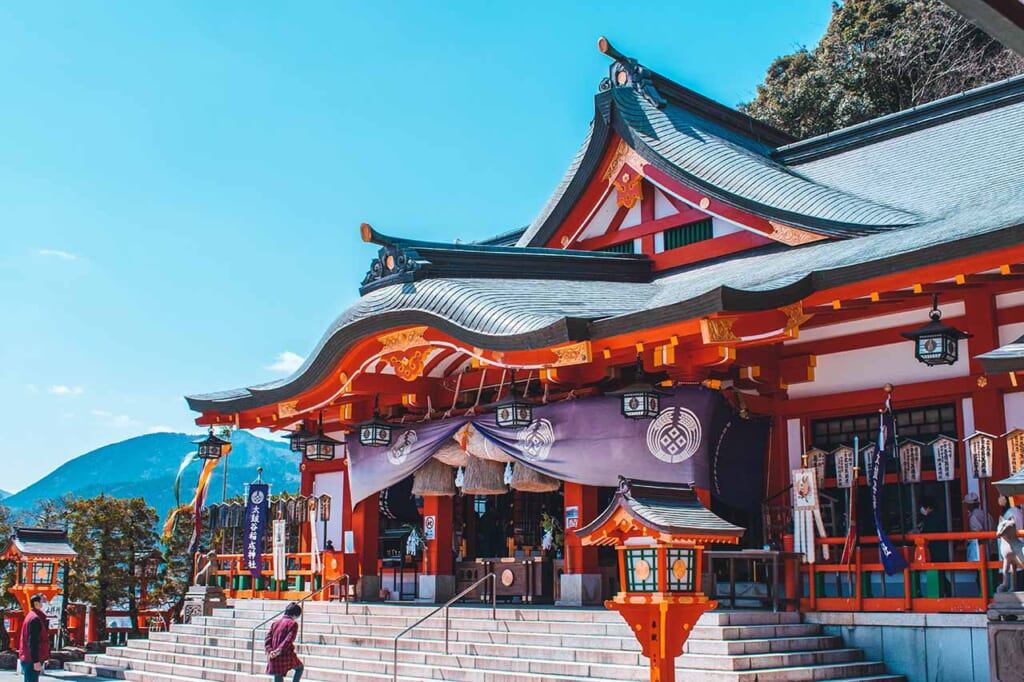
At Taikodani Inari Shrine (太皷谷稲成神社), you will find all the typical elements of an Inari Shrine, particularly the numerous fox statues and around a thousand bright red torii gates which line the path up the side of the mountain to the main building. Passing through the gates feels like walking through a mirror and bears a strong resemblance to Fushimi Inari Taisha Shrine in Kyoto. The massive shimenawa (thick ropes) which adorn the building are similar to those found at another shrine not far away in Shimane Prefecture, Izumo Taisha Shrine, considered one of the most important in Japan.
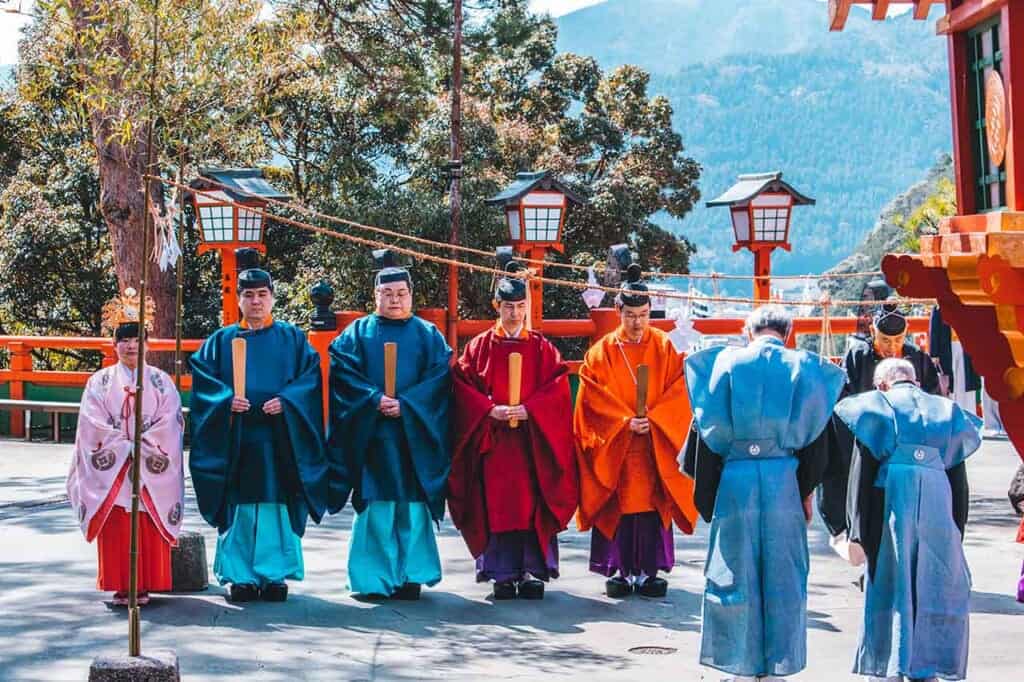
Shinto ceremony at Taiodani Inari Shrine 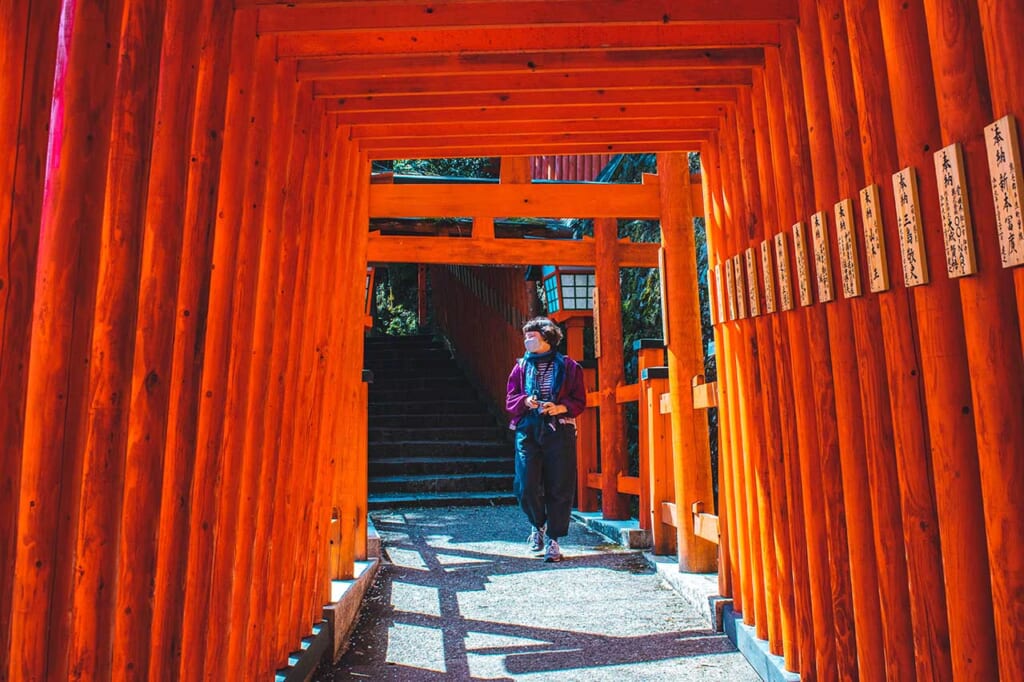
The torii gates form a bright red tunnel
After offering fried tofu to the god (apparently the meal of choice for the gods), it is possible to continue to the ruins of Tsuwano Castle by taking the chair lift situated just a few steps away.
Panoramic Views of Tsuwano From The Castle Ruins
Tsuwano Castle (津和野城跡) was built in the 13th century, but, like the majority of feudal castles in Japan, it was destroyed after the insurrection of the Meiji period in the 1870s. Even though you will not find a majestic steep such as the one in Matsue, Tsuwano Castle has preserved high stone walls and offers an exceptional panoramic view of the town with its typical orange roofs dominated by Mount Aono and the surrounding mountains in the background.
Thanks to the chair lift, the site is easily accessible, and it takes just 15 minutes to reach the castle. The more adventurous can also hike up and even extend their route by following some of the other hiking paths that lead to Hachimangu Shrine where, on the first Sunday in April, a festival with an exhibition of traditional mounted archery known as Yabusame (流鏑馬) is held, (allow about 1 hour 10 minutes to reach the Hachimangu Shrine on foot).
Tsuwano’s Christian Heritage: A Japanese Town For Hidden Christians from Nagasaki
The Christian history of Tsuwano can’t be any more represented than a large Catholic church taking pride of place on the main street. Even though construction work was underway during our visit, it was clear to see the importance of this building, and it was an unexpected sight amongst the samurai residences. The Tsuwano Catholic Church (カトリック津和野教会) was built at the end of the 19th century by missionaries before being reconstructed in 1931 following a fire. One of the peculiarities is that it does not have pews but rather a tatami room where the congregation gather for mass.
But why is there such a building in a small town deep in Shimane Prefecture, known for its Shinto heritage? The history of Tsuwano is linked to the hidden Christians of Nagasaki. While some emerged from the shadows during the Meiji period (1868), many were stopped and persecuted, sent to different regions of Japan and incarcerated until they renounced their faith. 153 Christians were detained in Tsuwano and subjected to torture for five years. 37 Christians died and are today considered martyrs. One of these martyrs claimed to have witnessed a Marian apparition and the diocese hopes to have them all beatified (a declaration by the Catholic Church of a deceased person’s entrance into Heaven) by 2023.
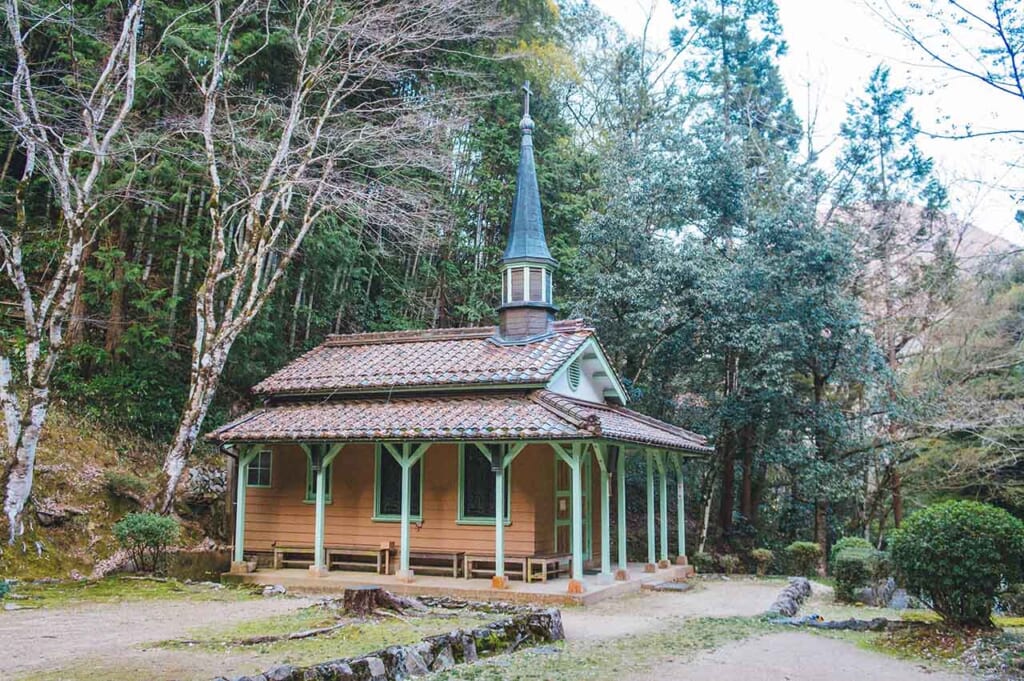
Saint Marie of Otome Touge Chapel (乙女峠マリア聖堂) was built in 1951 on the same site where the Christians were detained as a memory. It is situated in the mountains behind Tsuwano station and, even though the climb is quite steep, it is not long, and you are rewarded by a view of this little chapel in the woodland, a Western influence with the tiled roof. When I visited, I was fortunate enough to find it covered with magnificent cherry trees, a beautiful, calm sight amongst such tragic history. Even though it is not translated into English, the sign on the chapel’s door indicates that it is open and free to enter and to not forget to close the door behind you.
| Photography: Clémentine Cintré
Every year, on the 3rd of May, a procession is organised between Tsuwano Church and Otome Touge Chapel, attracting hundreds of worshipers.
A Town Where Local Traditions are Preserved by New Generations
In Tsuwano, there are several independent shops and workshops where artisan traditions and local gastronomy is passed from one generation to another. These traditions are thankfully very vibrant, and many of the younger generations have taken it upon themselves to preserve them for future generations.
Komien Kamiryo Chaho: A Tea Shop Run by a French-Japanese Couple
When I came to Tsuwano, I didn’t expect to be having a long and passionate discussion about the state of the agricultural situation and plants in Japan with a fellow Frenchman but that’s the beauty of discovering a new place. Adrien Ricotta and his wife Rumi moved to Tsuwano in 2017 and took over Komien Kamiryo Chaho (香味園上領茶舗), the family tea shop of Rumi’s grandparents which specialises in zaracha (ざら茶), a local tea that has been consumed daily since the Edo period.
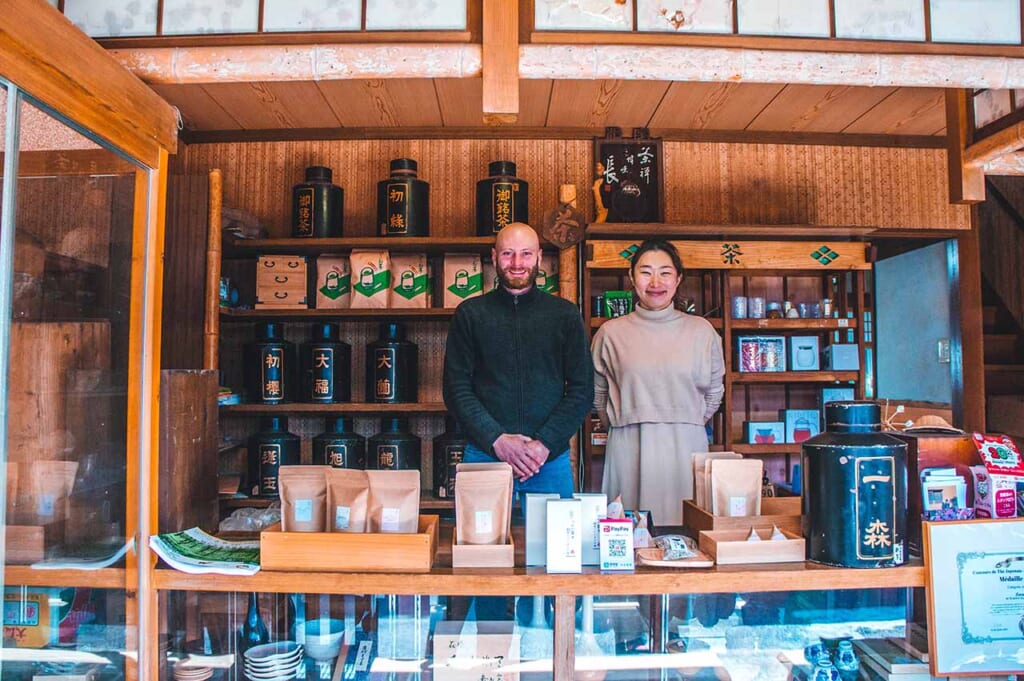
We should understand here that this “tea” is not tea leaves but roasted kawaraketsumei (河原決明). This plant is almost as unknown in Japan as in France, but it is said to have numerous benefits, including its use as an antioxidant, having anti-inflammatory qualities, and claims to clear away bad fats. What’s more, it has a delicious taste that is quite close to hojicha (roasted green tea). I came home with a large packet of zaracha and strong intentions to make it my new daily drink of choice.
Adrien also provides guided tours of Tsuwano in French or English, which include sites that would otherwise be hard to reach without a car and tea-tasting. You can contact him directly by email for more information.
Where To Stay in Tsuwano and Our Experience of Tsuwano Wataya Ryokan
There are several accommodation options in Tsuwano, from classic hotels to private machiya (traditional homes) as well as minshuku (small family homes). We spent the night at Wataya Ryokan (津和野温泉宿 わた屋) and, while it is not the most traditional in Tsuwano, it’s the only one to have a natural onsen (hot, natural spring water) bath outdoors where you can relax under the stars.
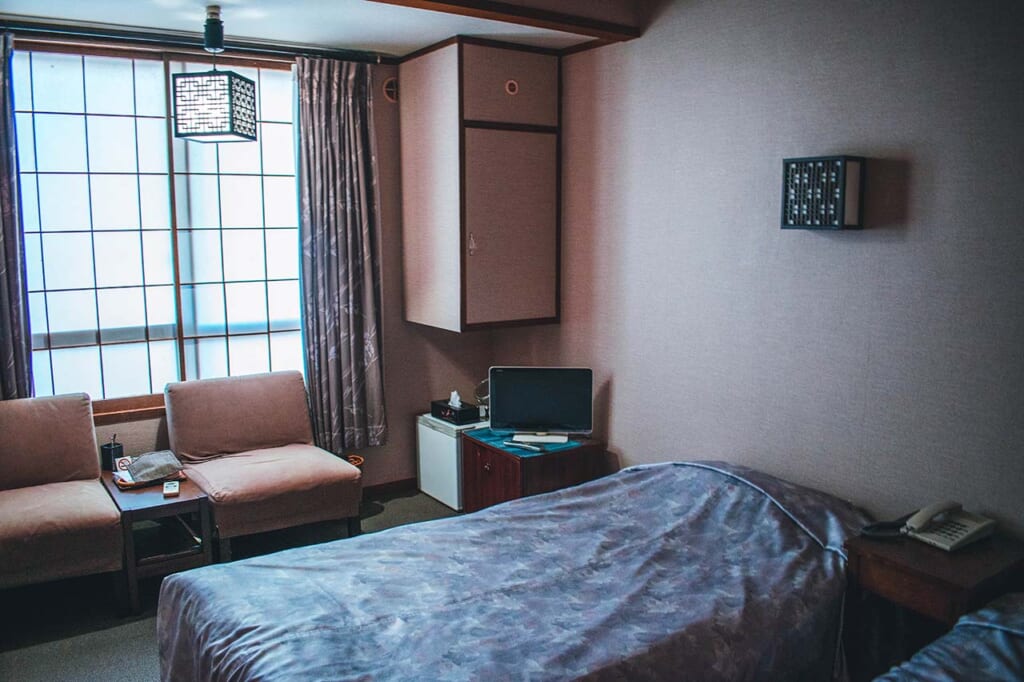
As always with ryokans, the welcome was excellent, the surroundings were relaxing, and the food was both delicious and refined, brimming with locally sourced, in-season products.
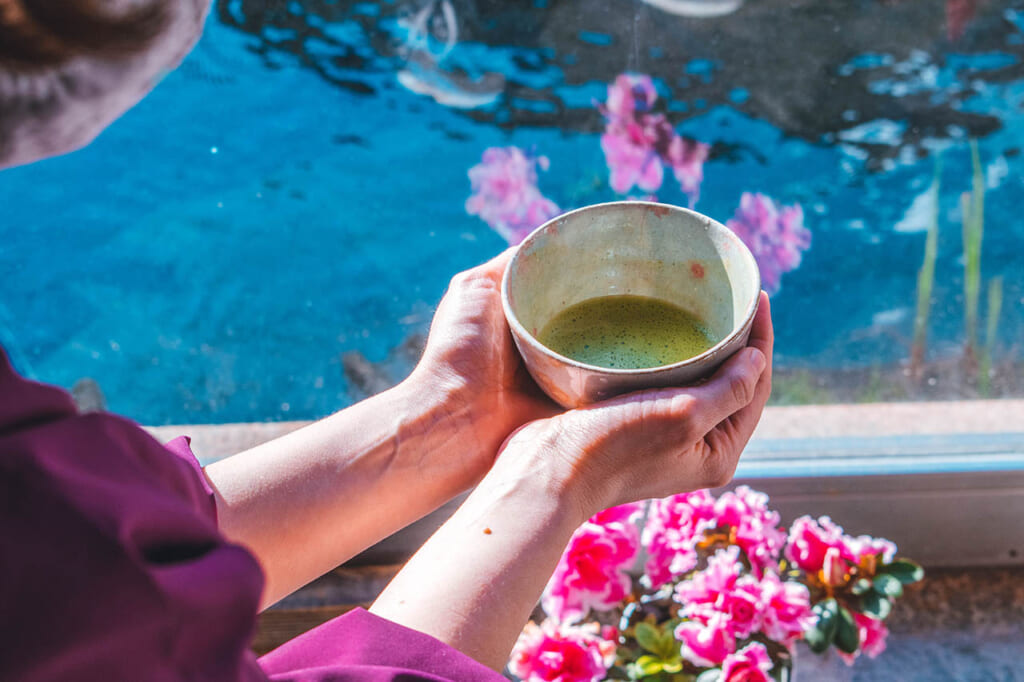
Matcha Tea on arrival 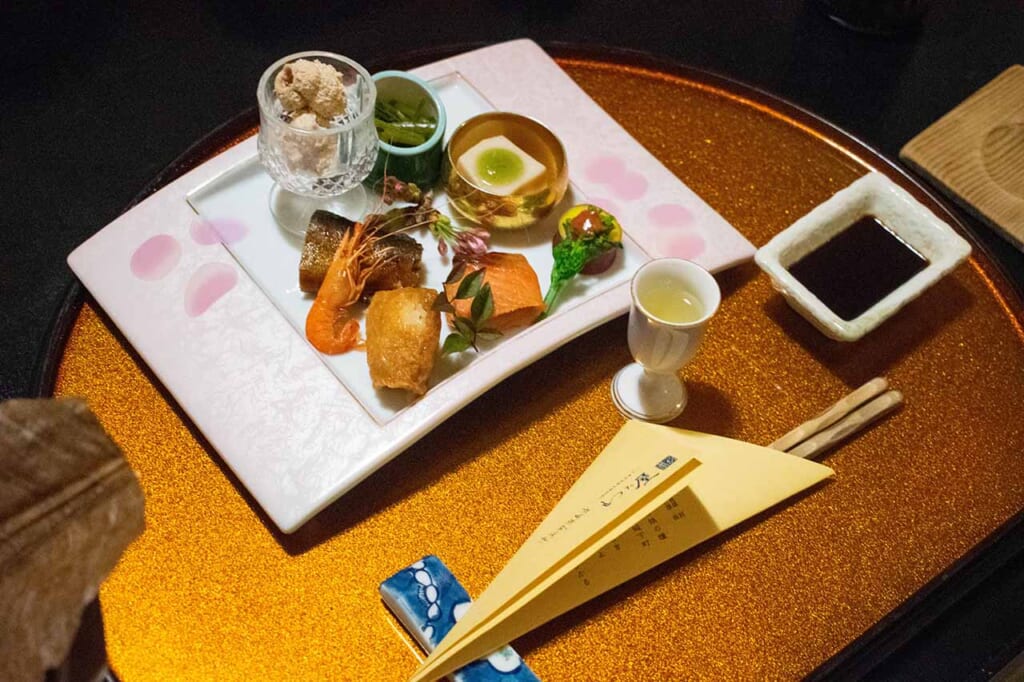
Kaiseki dining 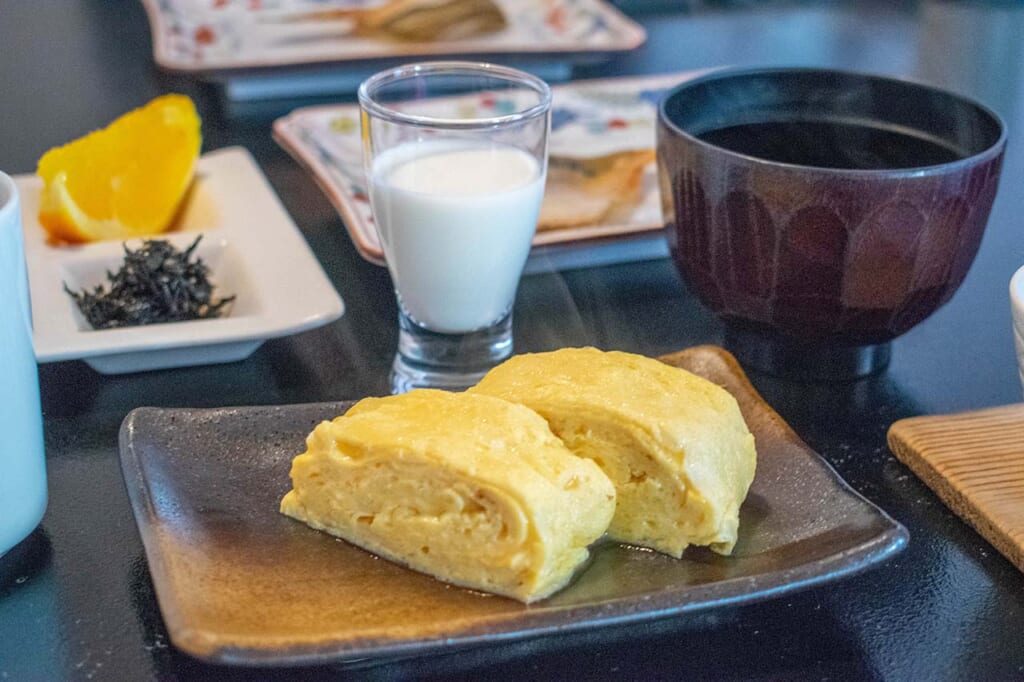
Traditional Japanese breakfast
Walking in Yukata Through the Streets of Tsuwano
Even though it wasn’t the season, seeing the coloured yukata neatly arranged in the chest of drawers in the hallway of the ryokan, we couldn’t resist the temptation to ask the owners if we could borrow them. They are available for guests to use, and it certainly wasn’t easy to choose between all of the different designs. Once we had chosen one, we set out into the streets of Tsuwano for an improvised photoshoot. Rather than go towards the historic district, we took the street towards the station, where we found some of the decor and a few details from the Showa era (1926-1989).
Practical Information
You will find more information on the Tsuwano Tourist Association website (in English) and on the website of Iwami region.
How To Get To Tsuwano
By train: Allow 1 hour 5 minutes from JR Shin-Yamaguchi station (新山口駅) on the “limited express” train (journey covered by the Japan Rail Pass). To get to Shin-Yamaguchi, allow about 30 minutes from Hiroshima or Hakata (Fukuoka), 1 hour 10 minutes from Osaka or Kyoto and 4 hours 20 minutes from Tokyo.
By Steam Train: from March to November, weekends and public holidays, it is possible to travel between Shin-Yamaguchi and Tsuwano onboard the SL Yamaguchi, a steam train with different carriages for a journey across the ages.
By Bus: An express bus between Hiroshima and Hamada (浜田駅) in Shimane Prefecture is available to those without a Japanese passport for only 500 JPY. More information on this PDF. From Hamada, allow a further 1 hour 5 minutes to 1 hour 30 minutes to reach Tsuwano on the JR line (1340-3270 JPY, journey also covered by Japan Rail Pass).
By car: To explore the Iwami region freely and take advantage of its natural and historic sites, renting a car could be an interesting option.
Tsuwano was a beautiful discovery during our stay in the Iwami region but one day exploring was far from seeing everything. There is much to discover; between the historic buildings, nature sites, museums, sake breweries, artisan workshops and festivals such as the Gion Matsuri where the amazing Sagi Maï (鷺舞, the dance of the heron) is performed each year from 20th to 27th July. I left Tsuwano with a strong urge to return and discover more of what makes this town such a hidden treasure.
Article written in partnership with Iwami Tourism Promotion Committee.
Photography: Romeo Arnault (unless mentioned otherwise) | Translated by Mark Webster
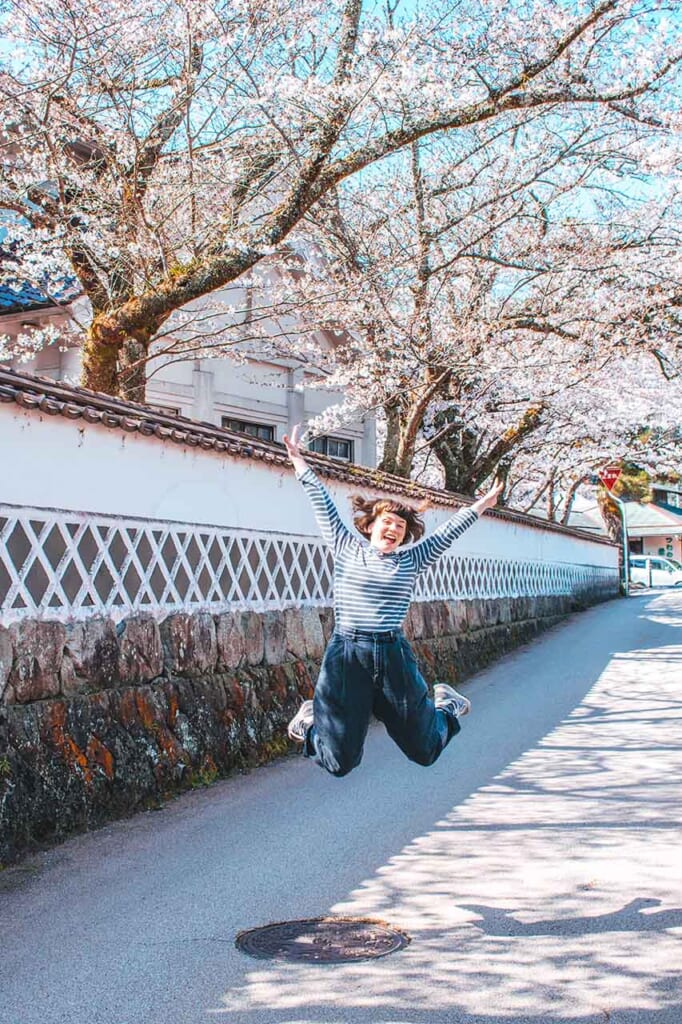
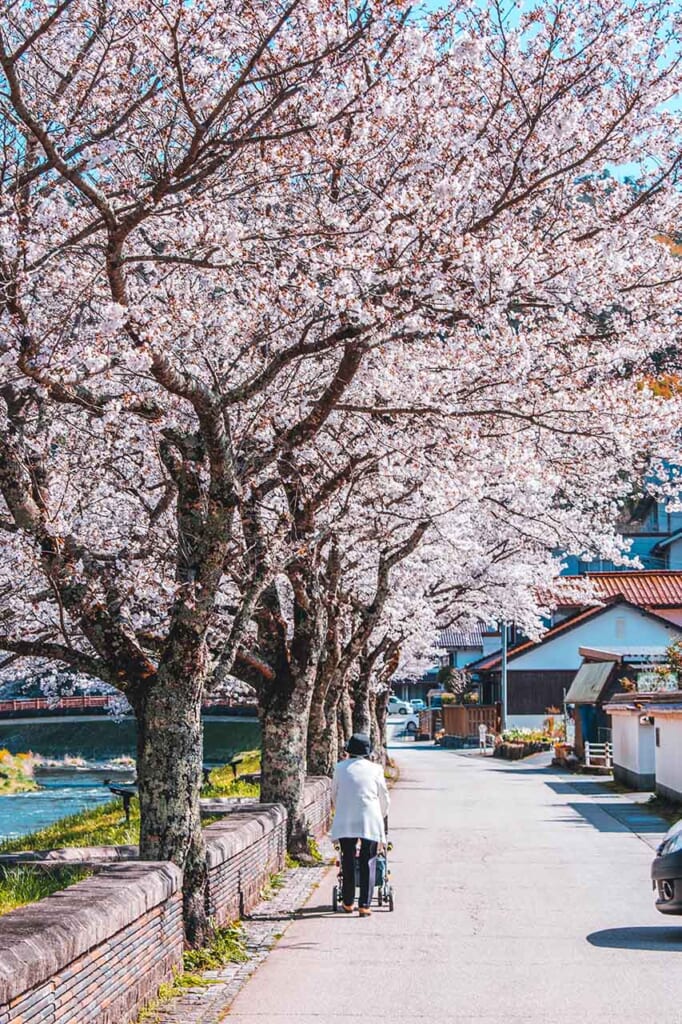
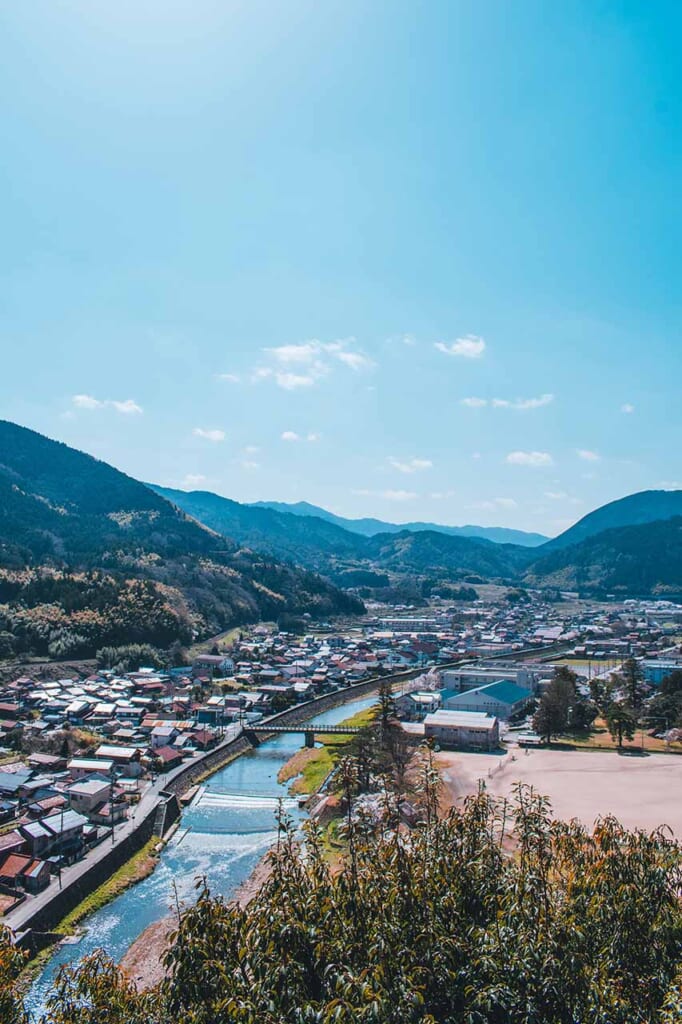
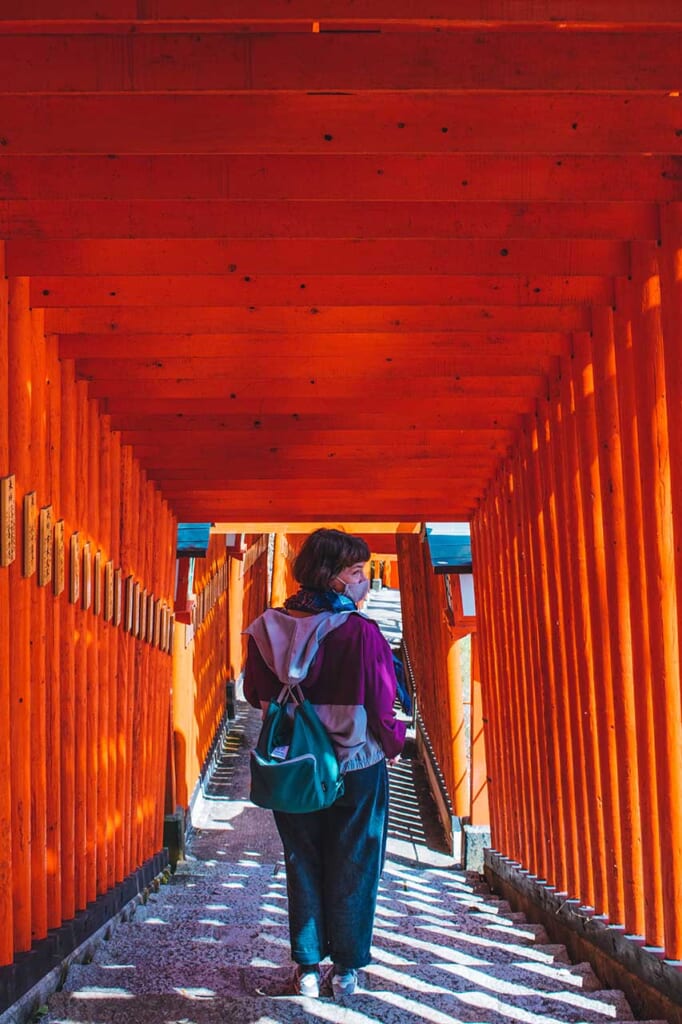
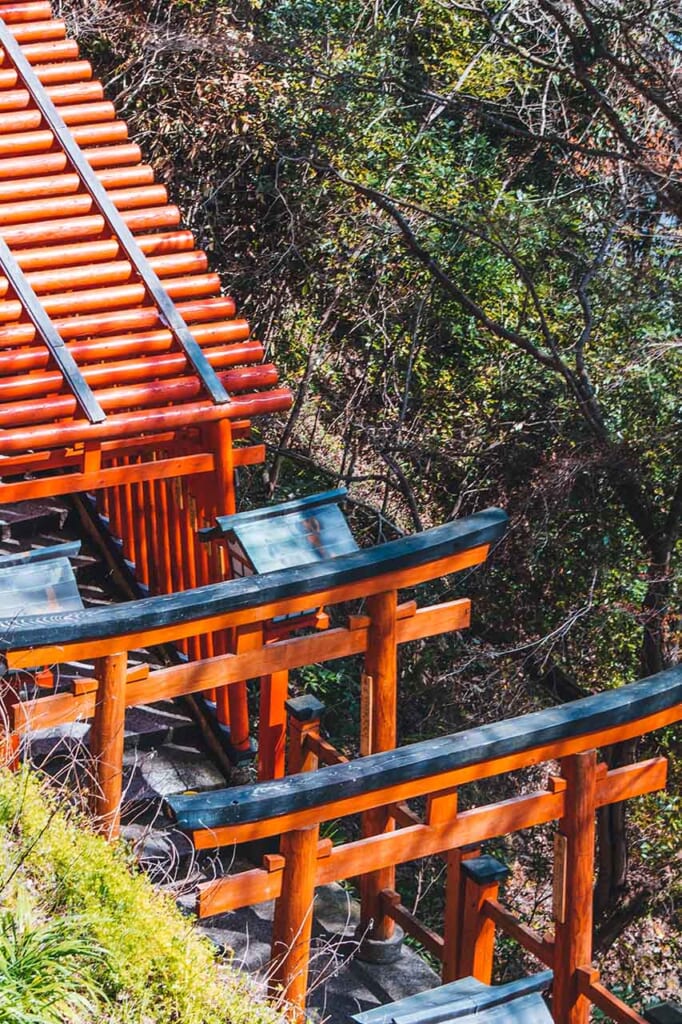
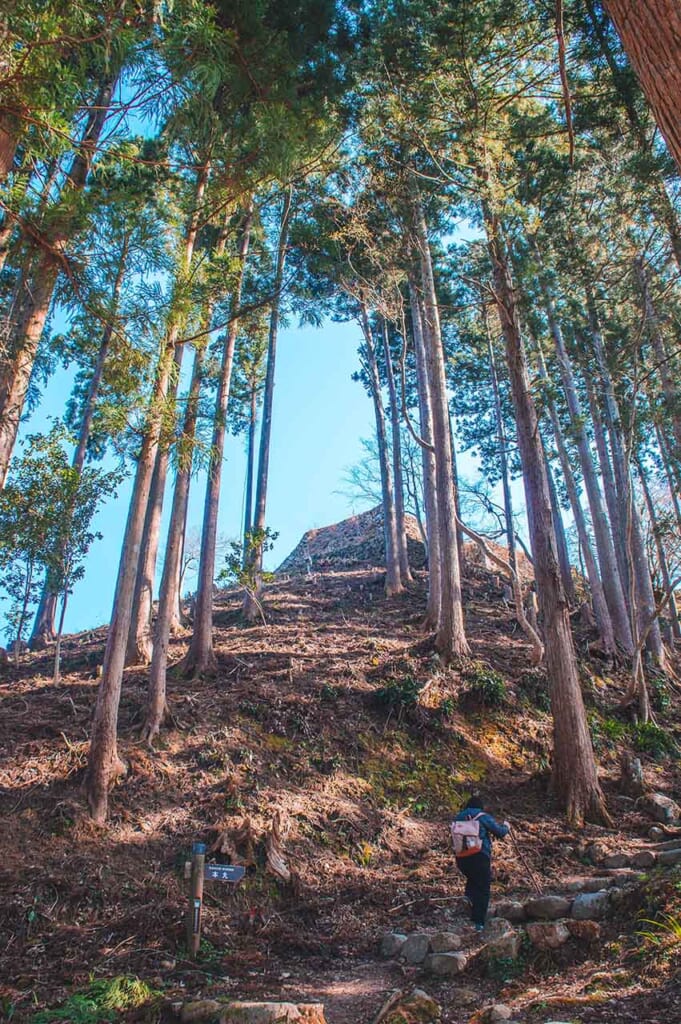
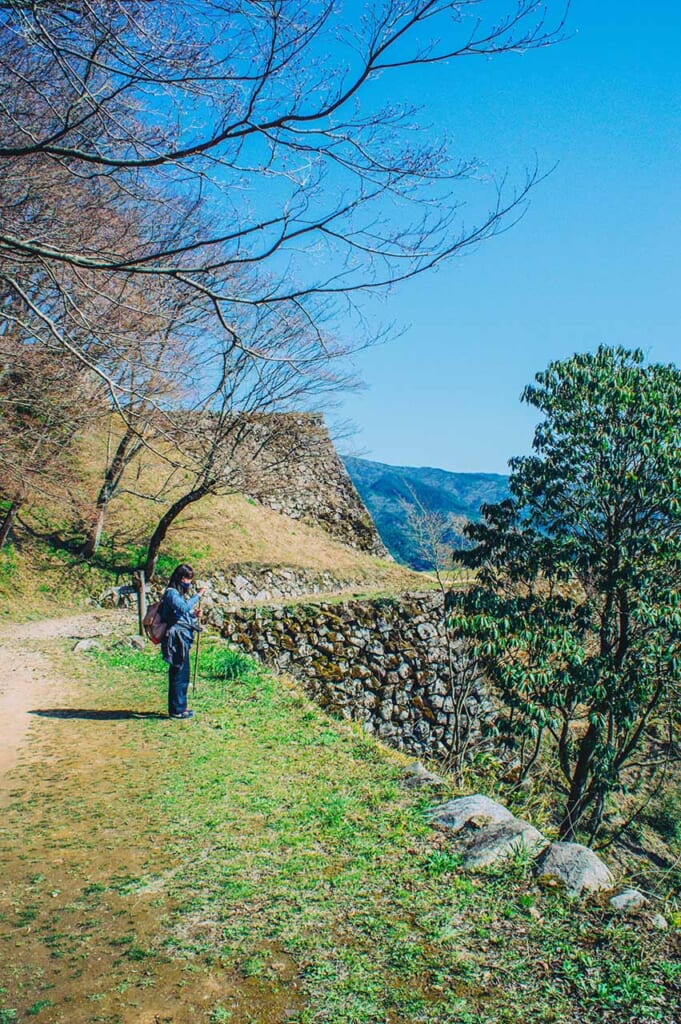
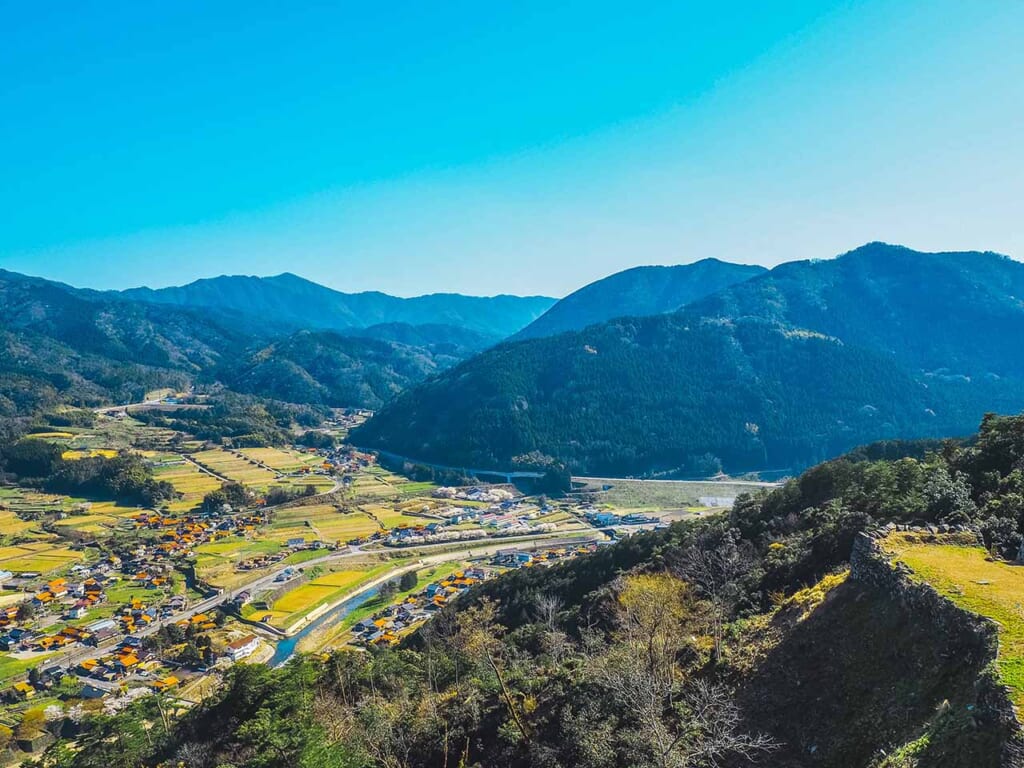


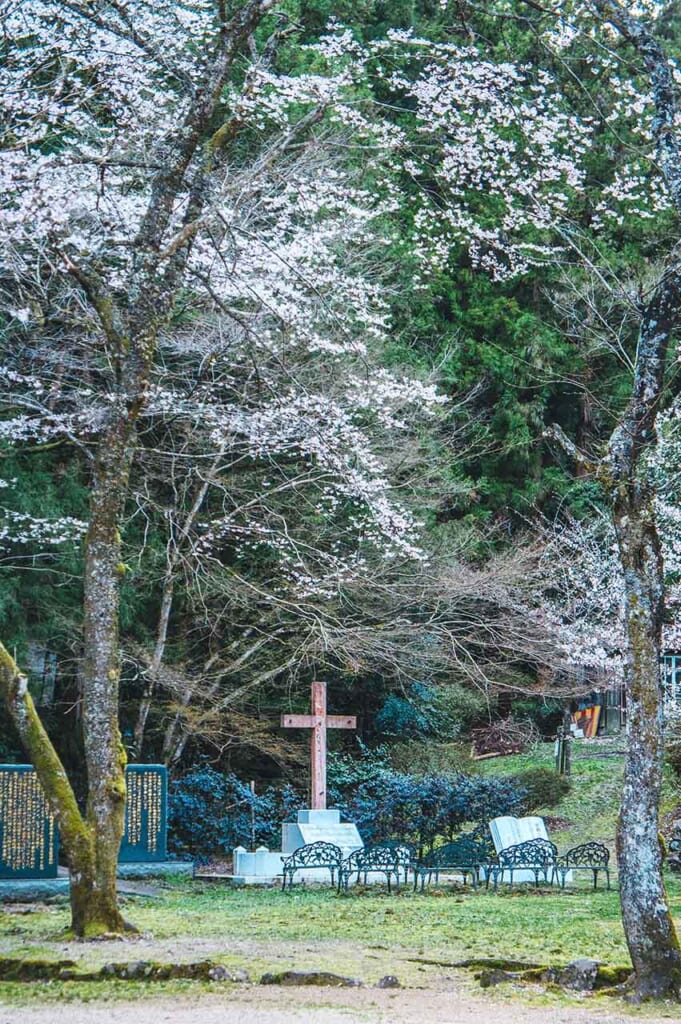
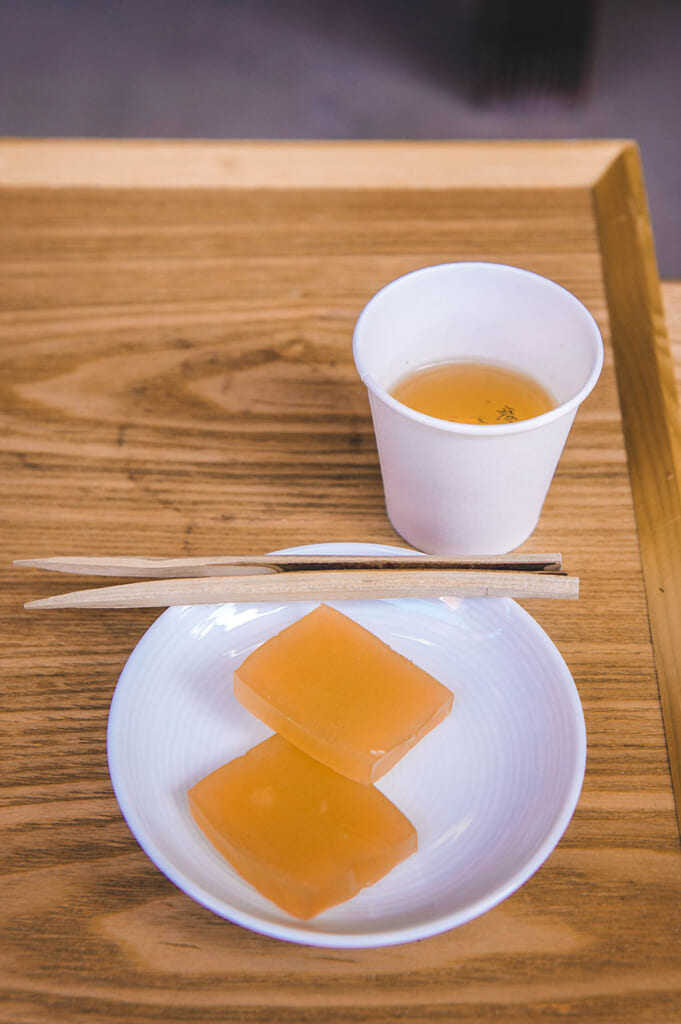
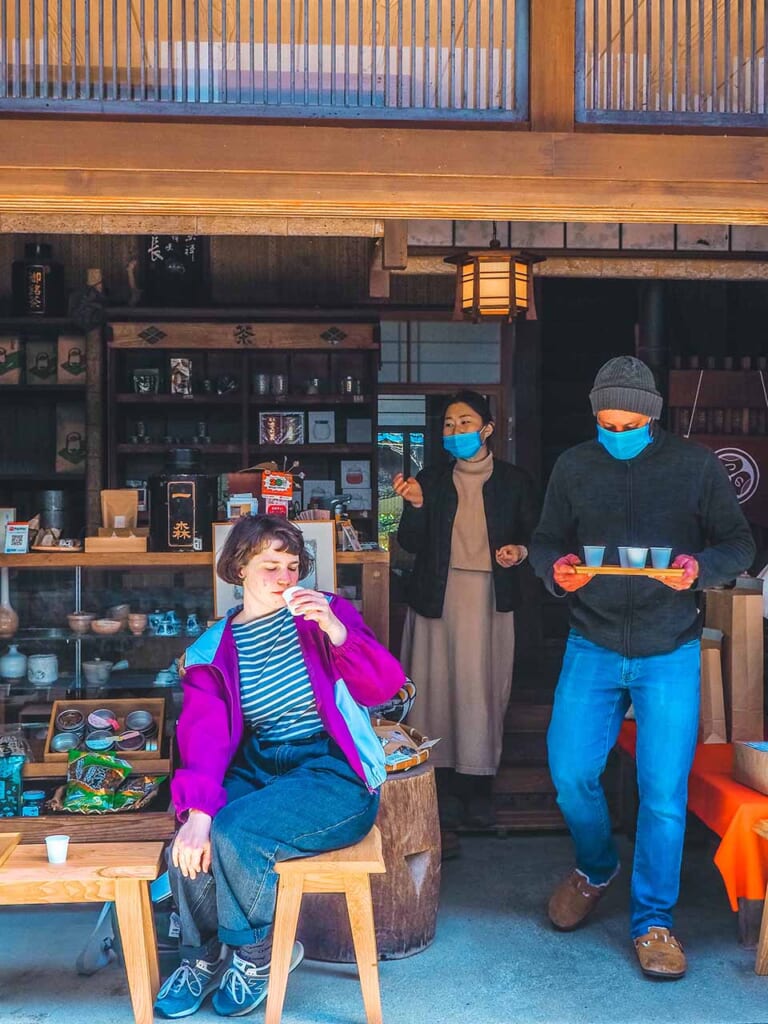
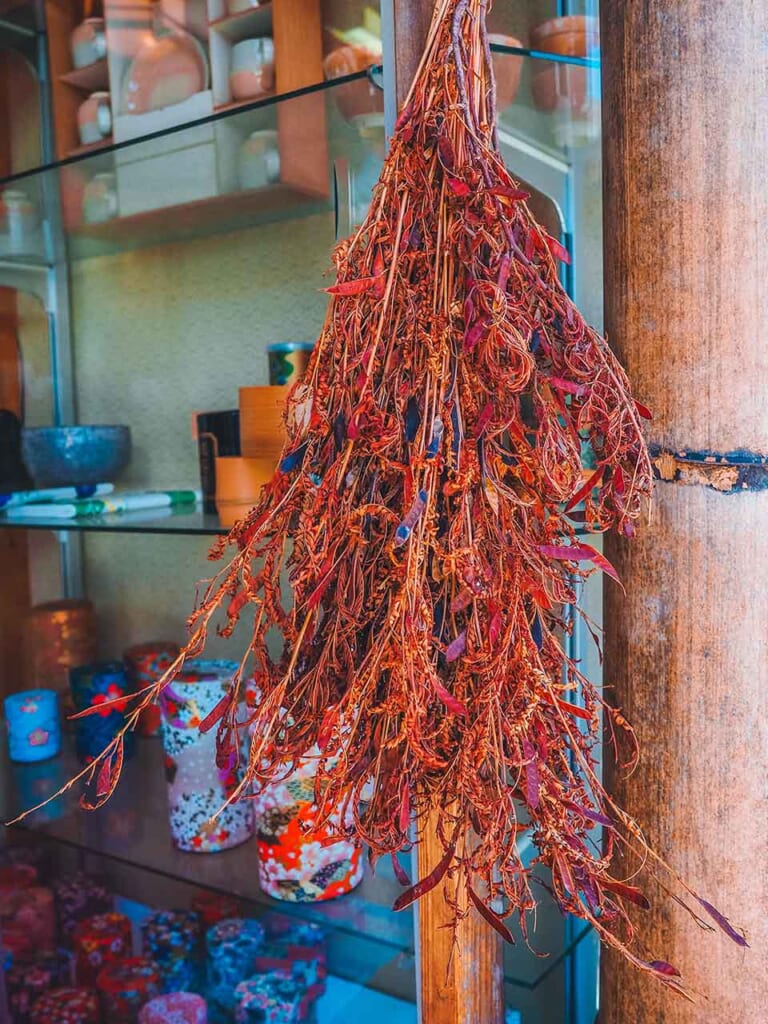
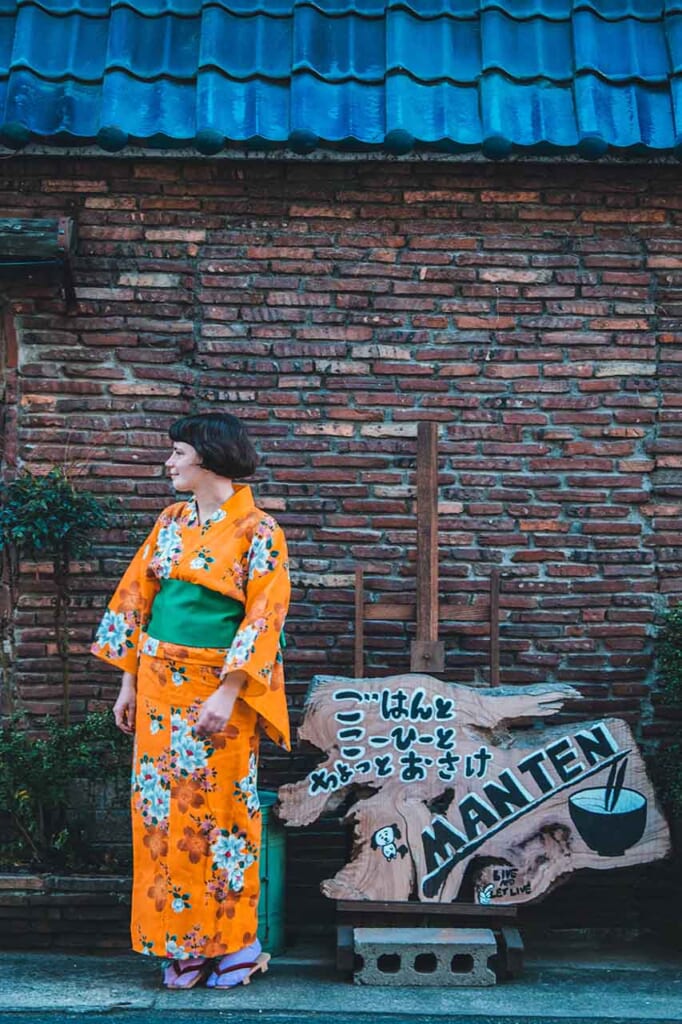
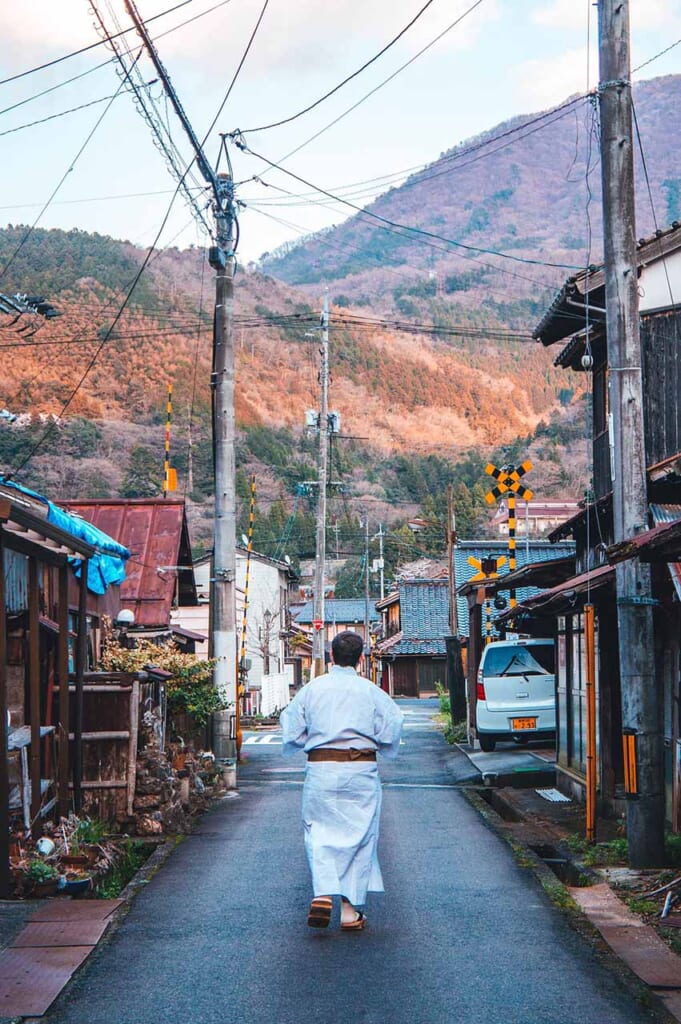

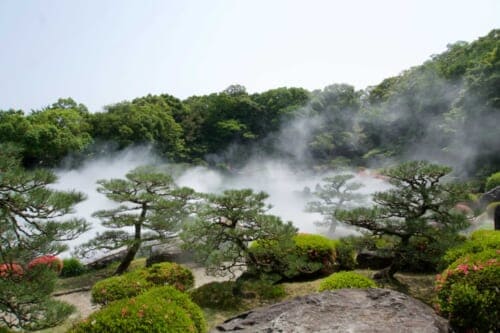
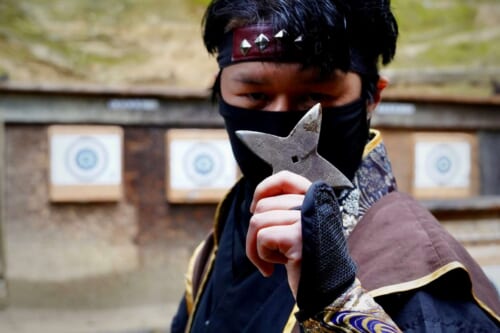










No Comments yet!